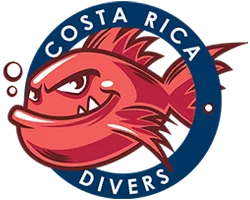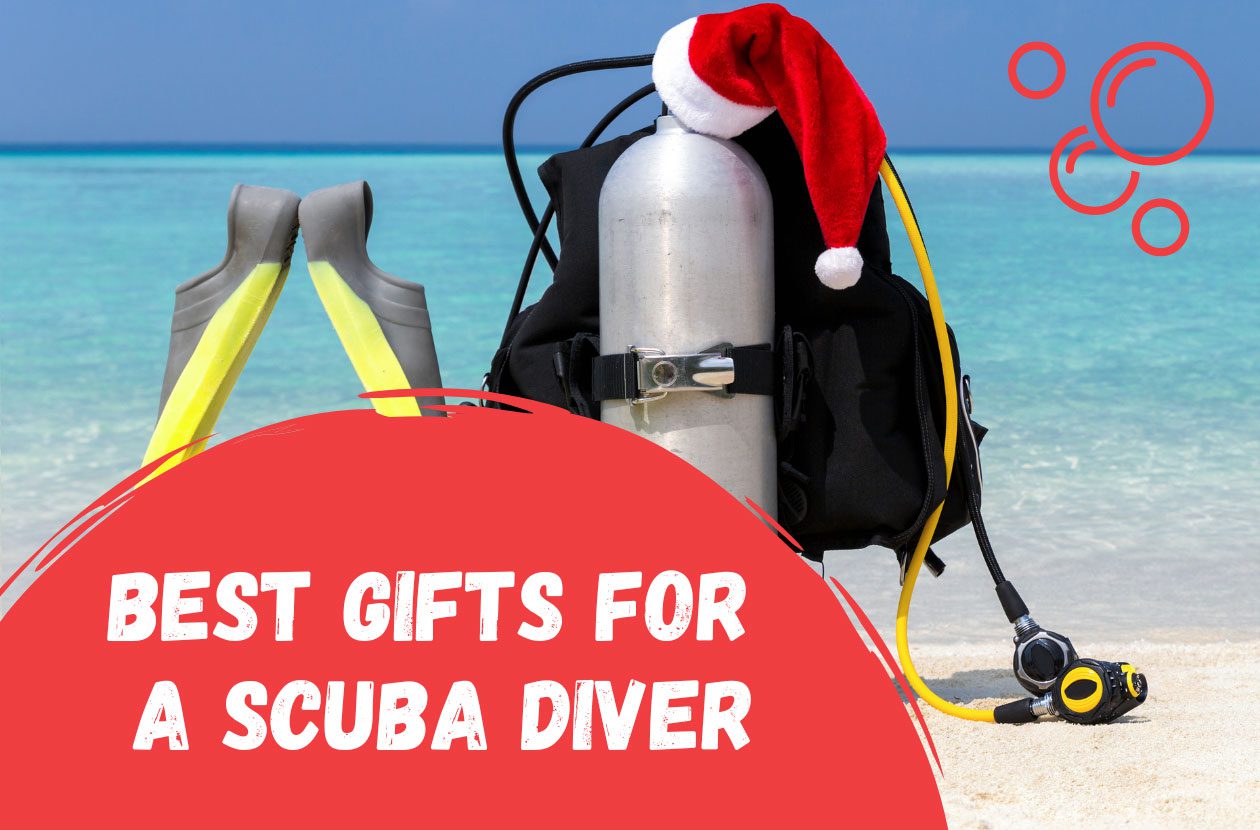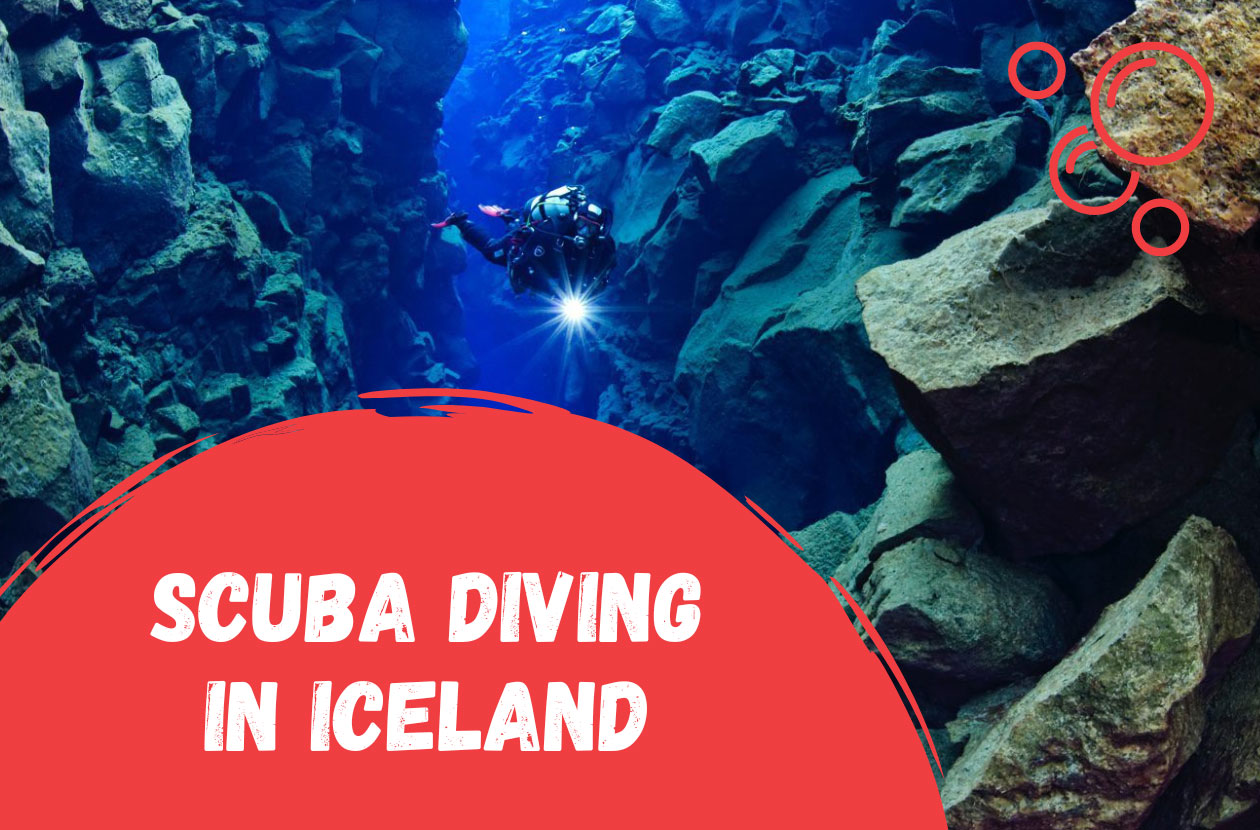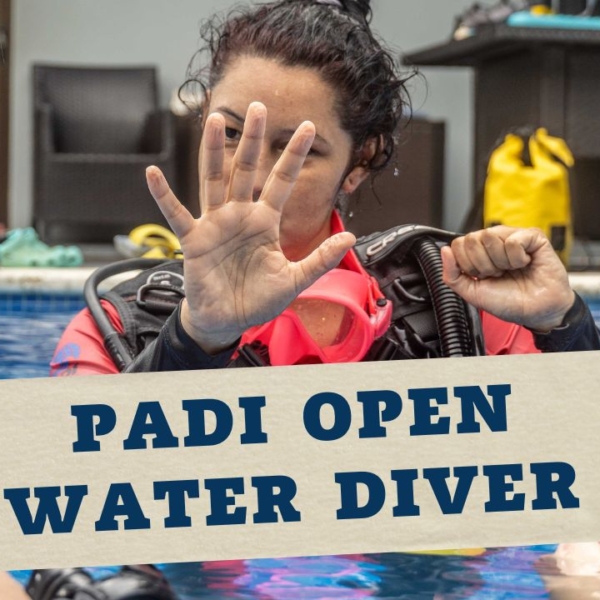A diving regulator is one of the most important parts of our diving equipment. Proper selection of the regulator, correct service and proper use increase our safety underwater. In practice, usually diving in dive centers, you have rented equipment and do not have to worry about anything. But does that mean you don’t need to know anything about dive regulators?
A good diver should not only know how to properly connect a breathing regulator to the tank, but also how a diving regulator works. If you get to the point of deciding to buy your own dive regulator, it’s worth knowing what to look for. So let’s start by explaining what a dive regulator is and how it works.
Table of Contents
What is the diving regulator used for?
So you know that when diving you have to use scuba gear, because we are simply not fish. Unfortunately… The most important of all equipment will be those items related to making sure you can breathe underwater, namely the dive tank, dive regulator and BCD, or buoyancy vest. The rest of the diving equipment like the mask and fins are also important, but it is the items related to breathing that are most important for your safety while diving.
In the tank you have compressed gas, which is most often regular air or enriched nitrox. This, unfortunately, will not help us dive unless we somehow get this gas out of the cylinder and deliver it to our lungs. And this is precisely the role of the diving regulator. On the other hand, we must note here that this gas that you have hidden in the diving tank was pumped in there at very high pressure, usually 200bar (3000psi). As a result, breathing compressed air at such high pressure would be impossible. That’s another job of the dive regulator, which is to adjust the pressure to one that will allow you to breathe.
Dive regulator – construction and function
At first glance, the diving regulator looks like some random tangle of random hoses. But this is not the case, and each hose has its own purpose and place. So let’s briefly discuss all the parts that make up a dive regulator used in recreational diving.
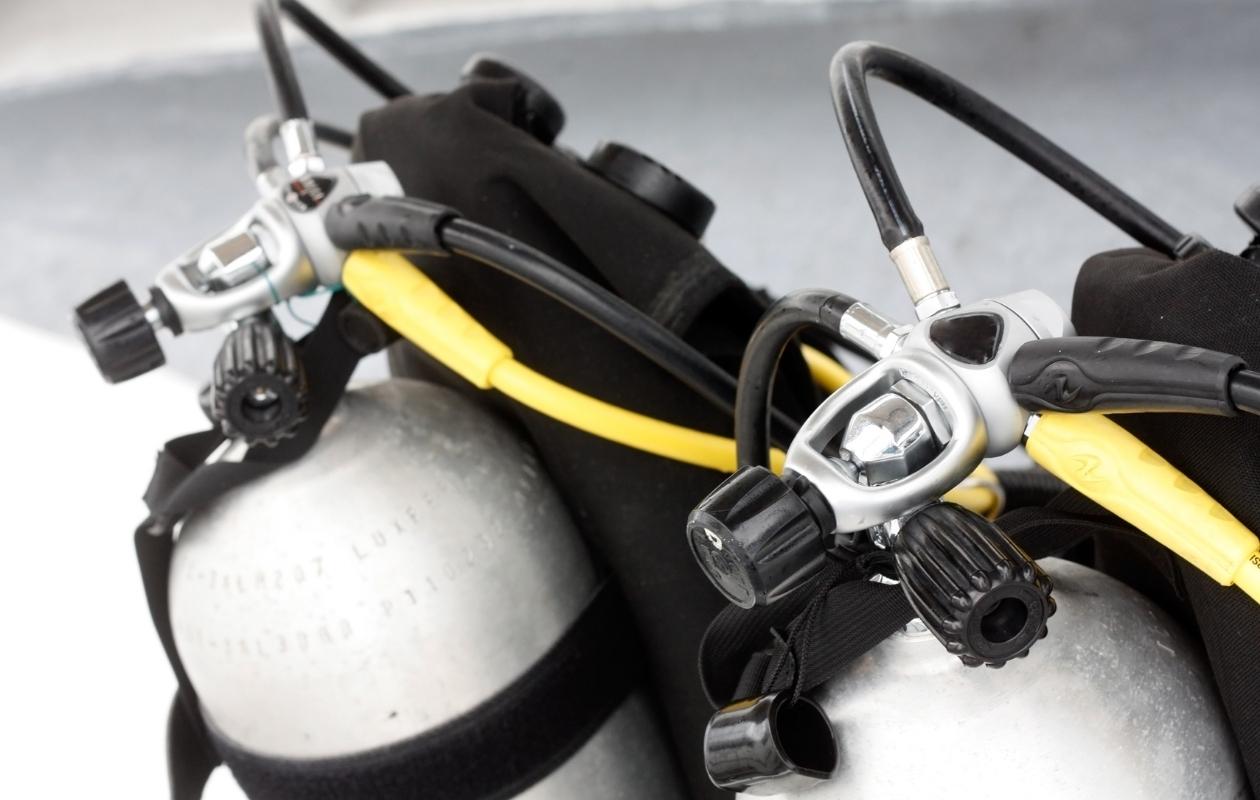
Let’s start with the two most important elements, that is:
- First stage – the first stage of the regulator is screwed onto the diving cylinder. Its function is to reduce the high pressure from the cylinder to about 10at overpressure. The first stage can be a diaphragm or piston type, can have a DIN or INT connection, and can operate at 200at or 300at pressure.
- Second stage – reduces the pressure from about 10at to ambient pressure. This element is located directly at the diver’s mouth.
These two components of the dive regulator are crucial, and one could risk saying that they would be sufficient to make a dive. Technically, this could be true, since it is the first and second stages that are responsible for delivering the breathing mixture to our mouths. But, of course, this is not enough for safe diving and our regulator needs a few more elements, namely:
Pressure gauge
Unfortunately, our diving tank does not have infinite capacity and our air supply must run out at some point. As a well-trained diver, you know that in practice you cannot allow such a situation. And even your duty is to be back on the surface with a safe limit of at least 50 bar in the cylinder. And to be able to plan it and control the air supply, we simply need a pressure gauge.
It is a simple device that connects with a hose directly to the first stage of your dive regulator. Importantly, it is the only high-pressure hose in the entire regulator. This means that all other devices do not benefit from the full high pressure you have in the cylinder. Only this particular pressure gauge is connected directly to that pressure you have in the tank. This allows you to accurately check your air supply.
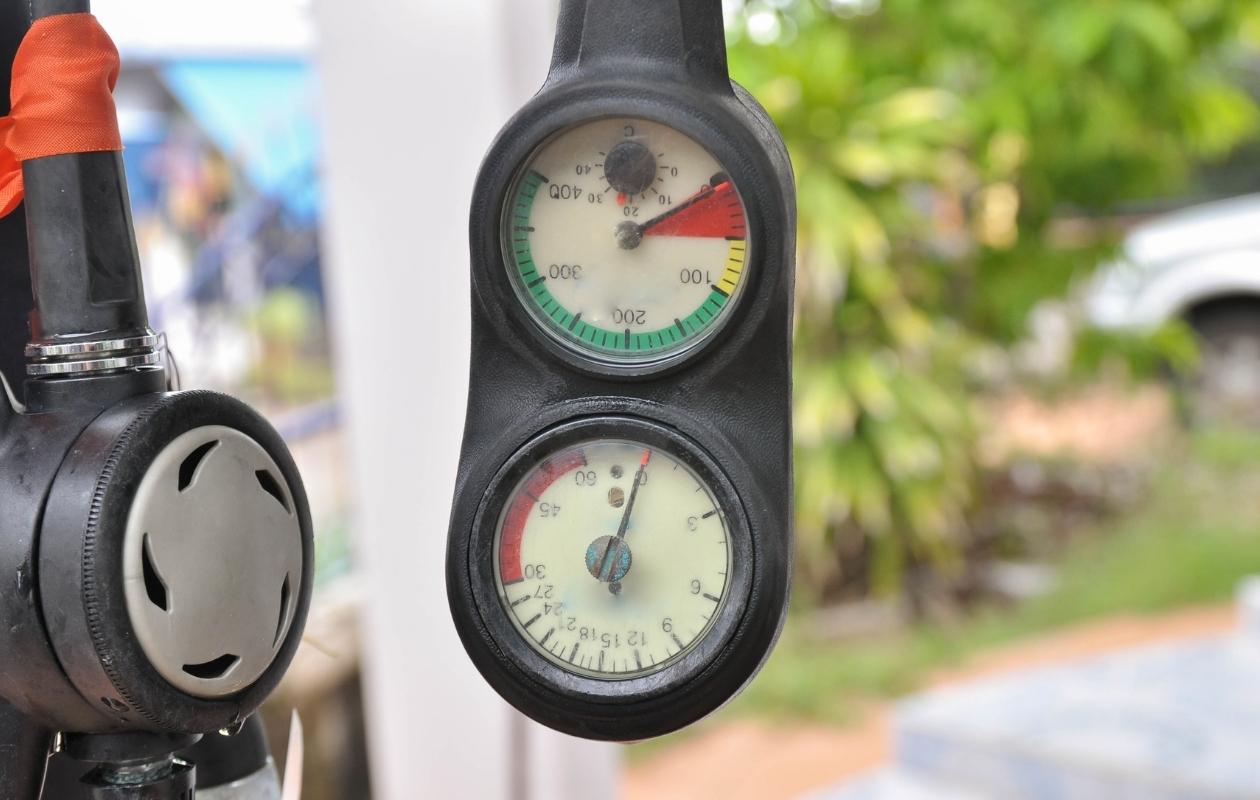
Your pressure gauge may have a scale in bars or PSI. It is a good idea to check this before jumping into the water, especially if you are diving in a new location. In addition, your scuba regulator’s pressure gauge may be accompanied by a depth gauge, compass or dive computer. Then such a set is called a dive console. I personally am not a fan of such solutions and always have my dive computer at hand. However, this is a matter of individual preference.
Octopus – alternative air source
Another element that your dive regulator should be equipped with is an alternative air source, or what is popularly known as an octopus. It is nothing more than the identical second stage you use in diving. The difference usually lies in the length of the hose, as the octopus is intended for your partner and therefore the hose is longer. Usually in training regulators or those bought in kits, the octopus is yellow in color. However, this is not a requirement. But in recreational diving the requirement is to have an alternative air source, which must be placed in an easily accessible place.
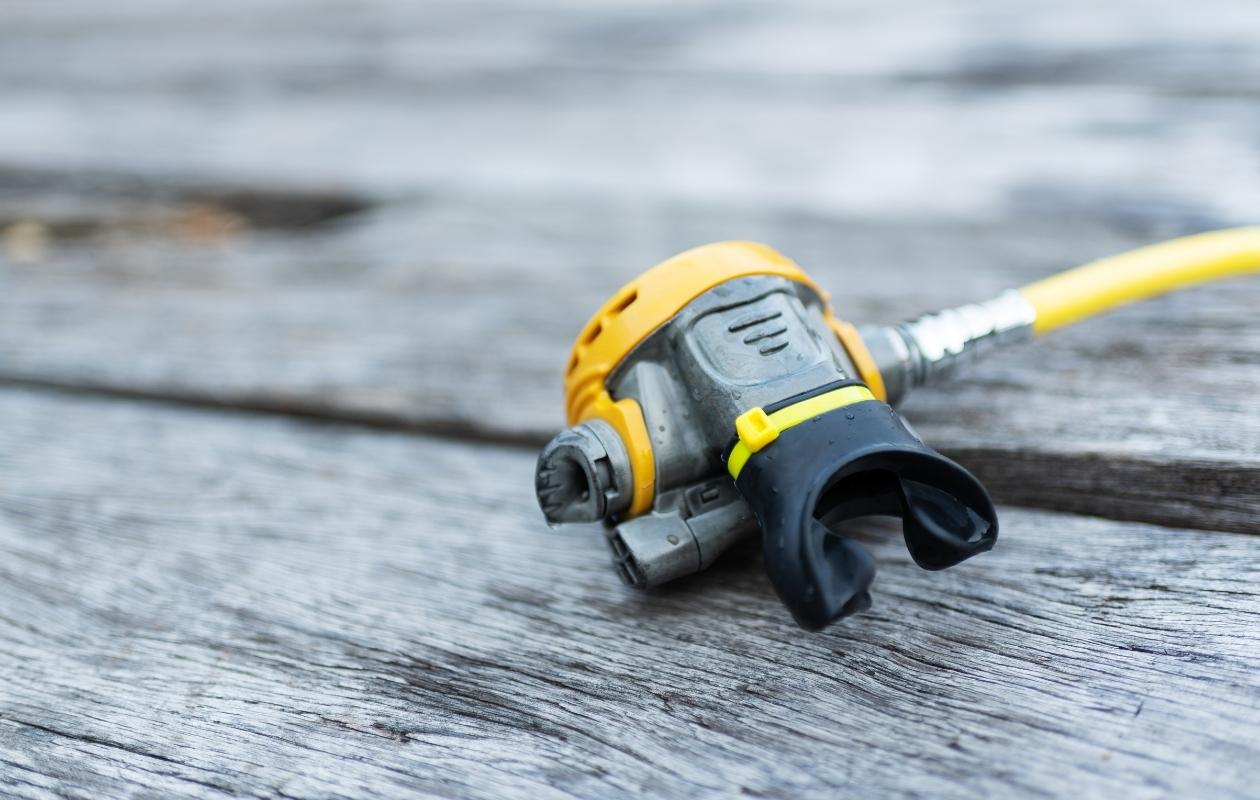
A small piece of advice, it is a good idea to practice helping your partner in an emergency situation. Giving an octopus is simple and should be a reflex, but done incorrectly, it can further stress out the diver who needs help. This drill is always performed on a diving course during pool exercises and later during ocean diving.
LPI – Low Pressure Inflator hose
The last component of the dive regulator in the recreational configuration, is the LPI. This is a hose that would seem to make little sense, as it ends with a quick connector and nothing else is attached to it. Nothing could be further from the truth, as this hose is a very important part of your diving equipment. The LPI, or low pressure inflator hose, is used to connect your BCD buoyancy vest to the air from your cylinder. With it, you will be able to quickly inflate your BCD on the surface or adjust your buoyancy underwater.
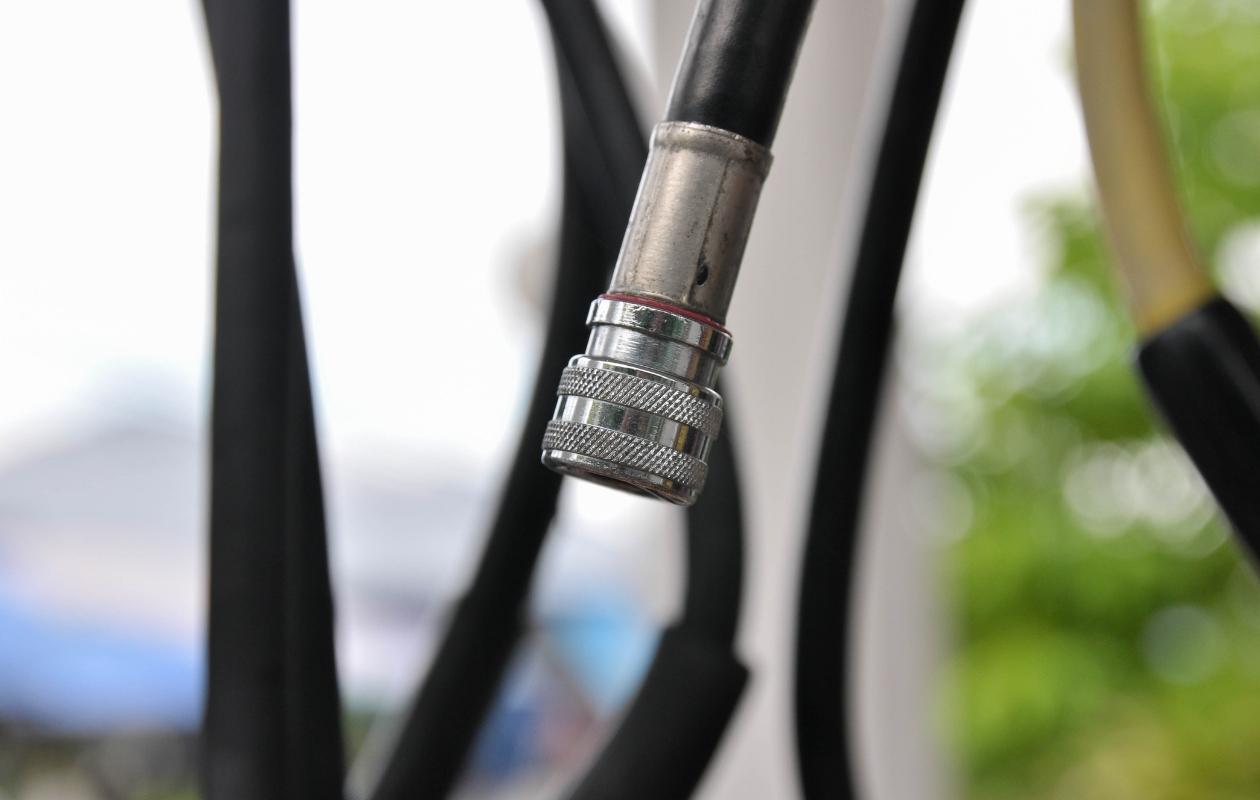
What else can a dive regulator have?
All this time we are talking about a regulator for diving in a recreational configuration. What is meant by such regular diving for pleasure, where we use one tank and dive in a partner system. In such a set-up, all the above-mentioned elements of the diving regulator are actually everything.
However, you can meet the regulator with other elements, and here two things come to mind. First, an additional low-pressure hose that will be connected to the dry suit during cold-water dives. It seems complicated, and actually using a dry suit requires taking a specialized course. However, we are still talking here about recreational diving, only that in cold water.
The second accessory you may face is the more and more popular wireless cylinder pressure sensor. It is a small device that screws directly into the first stage. This device connects wirelessly to our dive computer and you can check the air level directly on the computer. I will not hide the fact that I am not in favor of such a solution, and I do not fully understand what benefits it would bring me. However, I can imagine many failures with this sensor in the main role…. But this is your decision.
Which first stage to choose? DIN or INT?
Let’s return for a moment to the first element of our dive regulator, that is, the first stage. This is the part that you will screw directly into the diving cylinder valve. And here we have one of the most common questions, anyone who wants to buy their regulator. What type to choose? DIN, or better INT, also known as YOKE?
The question of which one is better to buy will be answered in another text on the subject of, precisely, choosing the best regulator for diving. Here let’s focus on a brief explanation of the differences.
As you already know, we have two types of valves and thus two types of first stages of regulators. The difference is that the INT (Yoke) is placed on the cylinder valve, while the DIN screws into the valve. We could talk at length about the advantages and disadvantages of each solution, and every diver certainly has his or her own opinion on the subject.
DIN vs YOKE
But let’s just say that the difference is that in warm waters and dive centers, the INT valve is more practical and durable. While the DIN-type valve is more resistant to damage, it tolerates very cold water better and allows diving with higher cylinder pressures.
So, when deciding to buy your own dive regulator, you should consider what dives you will do most often and which dive centers you will use. Of course, there is no big problem in using a DIN regulator with a YOKE valve or vice versa. This is made possible by adapters that can be easily installed. But is there any point in buying a regulator and mounting an adapter on it?
What is a scuba diving regulator? Let’s recap
So in the simplest terms, a dive regulator is a device that will help you stay alive throughout the dive. It will decompress the air from the cylinder and deliver it to your mouth so you can breathe underwater. In addition, it will perform several additional functions like buoyancy control in BCD, and dry suit control. It will also provide increased safety by accurately measuring cylinder pressure and allow the use of a spare regulator in an emergency. I guess I can’t say any more easily what a dive regulator is 🙂
